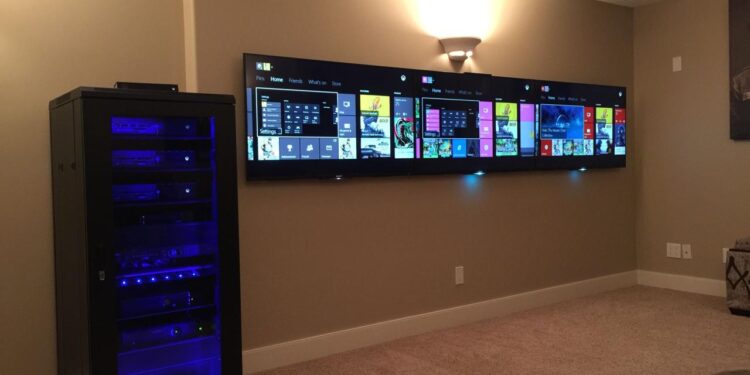The global shift to remote work has fundamentally altered the landscape of business operations. The traditional office, with its on-premise servers and local area networks, has been replaced by a distributed workforce of employees logging in from their homes, co-working spaces, and temporary offices around the globe. This new reality presents a unique set of challenges: how do you maintain seamless collaboration, ensure data security, and sustain peak productivity when your team is scattered across different locations and time zones? The answer, for businesses of all sizes, is to invest in a robust, well-planned server solution.
A server is no longer just a piece of hardware in a closet; it is the central nervous system that connects and empowers a distributed team. It is the single source of truth for all company data, the fortress that protects against cyber threats, and the platform that enables seamless collaboration. This comprehensive guide will serve as your definitive roadmap for navigating the world of server solutions for remote work. We will explore the critical reasons why a server is a necessity for a remote team, analyze the different types of server architectures, and provide a strategic blueprint for implementation that will ensure your business is not just surviving but thriving in the new era of remote work.
Why Remote Teams Need a Server

The move away from a centralized office environment creates a number of pressing issues that a server is uniquely equipped to solve.
A. Centralized Data Access and File Sharing: In the absence of a shared office network, remote teams are often forced to rely on a mix of personal devices, insecure public cloud storage, and email attachments to share and access files. This leads to version control issues, data silos, and a chaotic workflow. A server provides a single, centralized location for all company files, ensuring everyone on the team is working from the same, most up-to-date version of a document.
B. Enhanced Data Security: When data is scattered across personal computers and various third-party services, it becomes incredibly difficult to manage access, enforce security policies, and protect against data breaches. A server acts as a digital fortress, allowing you to implement a centralized security strategy, control access to sensitive information, and protect your data with a single, dedicated firewall and security suite.
C. Streamlined Collaboration and Productivity: A server is more than just a place to store files; it is a platform for collaboration. By hosting shared applications, databases, and project management tools on a server, you can create a seamless, cohesive work environment that is independent of any single physical location. This ensures that a remote team can work as efficiently and productively as a team in a physical office.
D. Business Continuity and Disaster Recovery: In a remote work environment, a physical disaster or a cyberattack can be catastrophic. A server, especially one with a robust backup strategy, provides the foundation for a comprehensive business continuity and disaster recovery plan. It allows you to store offsite backups of your critical data and ensures that your team can continue to operate even if a computer or a location is compromised.
The Core Solutions for Remote Teams
Choosing the right server architecture is the most important decision you will make. There are three primary options, each with its own set of advantages and disadvantages.
A. Cloud Servers (IaaS)
A cloud server is a virtual server hosted in a data center and managed by a third-party provider like Amazon Web Services (AWS), Microsoft Azure, or Google Cloud Platform (GCP). It is the most common solution for modern, remote-first businesses.
- How It Works: You “rent” a virtual machine and its resources—CPU, RAM, and storage—on a subscription basis. The physical hardware is managed by the cloud provider, and you access your server over the internet.
- Ideal Use Cases:
- Hosting a web server or a database.
- Running a shared application.
- As a central repository for collaboration tools.
- Advantages:A. Unmatched Scalability: You can easily add more resources to your server in minutes, allowing it to grow with your team’s needs without any hardware changes.B. No Hardware to Manage: The cloud provider is responsible for all the physical hardware maintenance, security, and infrastructure management, freeing you from a major administrative burden.
C. Accessibility from Anywhere: You can access your server from any location with an internet connection, a crucial benefit for a distributed team.
- Disadvantages:A. Unpredictable Costs: The pay-as-you-go model can lead to unexpected monthly bills, especially if you are not carefully monitoring your usage.B. Reliance on Internet: The server’s performance is entirely dependent on your internet connection.
C. Less Control: You have less control over the underlying hardware and network configurations.
B. On-Premise Servers
An on-premise server is a physical server located in your office or a secure data room. It is the traditional model of server ownership, and it provides a level of control that cloud solutions cannot match.
- How It Works: You purchase the physical hardware, install the operating system, and manage the server yourself. The team connects to it remotely via a secure network connection.
- Ideal Use Cases:
- A file server for a small, co-located team.
- A local database for a high-performance application.
- Advantages:A. Total Control and Customization: You have full control over the hardware, security, and software, allowing you to tailor the server to your exact needs.B. Predictable Costs: After the initial capital expenditure, your recurring costs are limited to electricity and maintenance, which makes budgeting straightforward.
C. Local Network Speed: For a team that still has some employees in a central office, an on-premise server provides lightning-fast local network speeds.
- Disadvantages:A. Requires Technical Expertise: You are responsible for all server management, maintenance, and security.B. High Upfront Cost: The initial investment in hardware can be significant.
C. Limited Scalability: Scaling an on-premise server is a manual and time-consuming process that often requires downtime.
C. Hybrid Servers
A hybrid server solution combines the benefits of on-premise and cloud servers. This is an increasingly popular model for remote teams that have a mix of on-site and remote employees or that have specific security or performance requirements.
- How It Works: You use an on-premise server for some services (e.g., a high-performance local database) and a cloud server for others (e.g., a collaboration platform and offsite backups).
- Ideal Use Cases:
- A business that needs a powerful local database but wants a secure cloud solution for file sharing and collaboration.
- A business that needs a secure, physical repository for sensitive data but wants a scalable, flexible solution for remote teams.
Essential Server-Based Services for Remote Teams

The server is just a platform. Its value is unlocked by the services it hosts. Here are the most important server-based services for remote teams.
A. Secure Remote Access: The Foundation of Remote Work:
This is the single most important service for a remote team.
- Virtual Private Network (VPN): A VPN creates a secure, encrypted tunnel from an employee’s computer to the server, making them appear as if they are on the local office network. This is a critical tool for providing secure access to an on-premise server.
- Remote Desktop Gateway: A remote desktop gateway provides a secure way for employees to access a server’s graphical interface from anywhere in the world.
B. Centralized File Sharing and Synchronization:
- Self-Hosted File Sync: Tools like Nextcloud or Synology Drive provide a private, self-hosted alternative to Dropbox or Google Drive. They allow employees to securely sync files to their devices and access them from anywhere, with the added benefit of full control over their data.
- Network Attached Storage (NAS): For small teams, a NAS from a brand like Synology or QNAP is an excellent solution. It is a purpose-built server for file sharing that is easy to set up and manage.
C. Virtual Desktop Infrastructure (VDI): The Ultimate Security:
VDI is a technology that hosts a user’s desktop environment on a centralized server. The user connects to their virtual desktop from their local computer, but all the processing and data storage happens on the server.
- Benefits for Remote Teams:
- Enhanced Security: All data and applications remain on the server, making it a highly secure solution for managing a distributed workforce.
- Simplified Management: It allows IT to manage and update a team’s desktops from a single centralized location.
D. Collaboration and Communication Tools:
A server can host a variety of tools that improve team collaboration.
- Private Chat Server: Hosting a private chat server (e.g., Mattermost or Rocket.Chat) gives a team a secure and controlled communication channel.
- Project Management and CRM: Hosting a self-managed project management tool or CRM on a server gives a team a single source of truth for all their projects and client data.
The Strategic Blueprint for Implementation
Choosing and implementing a server solution for a remote team requires a clear, strategic plan.
A. Assess Your Team’s Needs:
Before you choose a server, you need to understand your team’s specific requirements.
- Team Size: The size of your team will dictate the performance and scalability requirements of your server.
- Data Type: The type of data you handle (e.g., large video files, a relational database, or simple documents) will influence your choice of hardware and storage.
- Applications: The applications your team uses will determine whether a server needs to run a Linux or a Windows operating system.
B. The Security-First Mindset:
Security is the most important factor for a remote server. You must:
- Enforce Strong Passwords and Multi-Factor Authentication (MFA): MFA is a non-negotiable for all server logins.
- Regular Security Audits: Regularly audit your server for vulnerabilities and apply the latest security patches.
- VPN: Implement a VPN for all remote access to an on-premise server.
C. Plan for Scalability:
Choose a server solution that can grow with your team. A cloud server is inherently scalable, but an on-premise server should be chosen with a focus on future expansion, with a CPU that has room to grow and a chassis that has plenty of drive bays for additional storage.
D. Training and Support:
The best server solution in the world is useless if the team does not know how to use it.
- Training: Provide clear and concise training on how to use the server’s services securely and efficiently.
- Support: Ensure there is a clear plan for technical support for the remote team.
Conclusion
The era of remote work has fundamentally changed how businesses operate, but it has not changed the need for a central, secure, and reliable IT infrastructure. In this new reality, a well-planned server solution is the critical investment that transforms a chaotic collection of scattered workers into a cohesive, productive, and secure team. The right server solution is the backbone of a thriving remote workforce, providing the connectivity, security, and access to resources that were once only available in a physical office.
The choice between a cloud server, an on-premise server, or a hybrid model is a strategic one, based on the unique needs, budget, and technical expertise of your business. For businesses that prioritize flexibility and scalability with minimal management burden, a cloud server is the ideal solution. For those that require a higher level of control and predictable costs, an on-premise server remains a compelling choice. And for everyone in between, a hybrid model provides the perfect balance of both worlds.
Ultimately, the power of a server for a remote team lies in its ability to bring people and data together, regardless of physical location. It is the tool that ensures your business continuity, streamlines your collaboration, and protects your most valuable asset—your data. By investing in the right server solution and a security-first mindset, you are not just adapting to a new way of working; you are building a resilient and future-proof business that is ready to face any challenge that comes its way.












